ATLAS
ATLAS
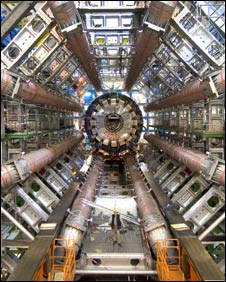
ATLAS is a particle physics experiment that explores the fundamental nature of matter and the basic forces that shape our universe. Using the proton beams produced by the Large Hadron Collider (LHC), the ATLAS detector searches for new discoveries in the head-on collisions of protons of extraordinarily high energy. ATLAS is one of the largest collaborative efforts ever attempted in the physical sciences. There are around 3000 physicists (Including 1200 students) participating from more than 182 universities and laboratories in 42 countries.
ATLAS at Glasgow
ATLAS at Glasgow
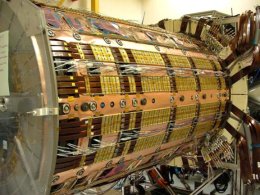
ATLAS is our largest experimental activity, and our interests include measurements of the Higgs boson and the top quark, tests of quantum chromodynamics and searches for new physics. We made major contributions to the contribution of the silicon tracking detector, contribute to the development of reconstruction algorithms, the trigger system, Monte Carlo simulation and Grid data management tools. We are also heavily involved in the construction of the phase-II upgrade, with major roles in the silicon pixel and strip detectors, and the trigger system. The group comprises of 9 academics, around 17 research staff and 17 postgraduate students.
Physics Studies
Physics Studies
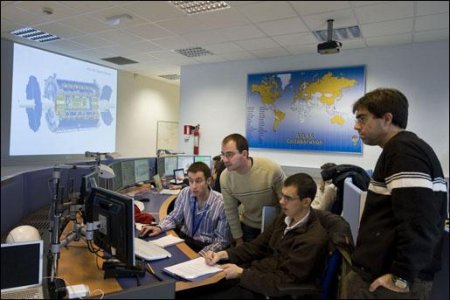
The group has a range of physics interests, covering measurements of the Higgs boson and the top quark, tests of quantum chromodynamics and searches for new physics.
Since the discovery of the Higgs boson in 2012, a major priority in the field is to establish if the Higgs boson behaves as predicted by the Standard Model of particle physics. In the Higgs sector, the group played a major role in the observation of the decay of the Higgs boson into b-quarks and the observation of the production of the Higgs boson in association with top-quarks. The group is continuing to explore Higgs boson production at very high momentum and to search for the very rare process of di-Higgs production.
The top quark is the heaviest fundamental particle and may provide a window on physics beyond the Standard Model. The group has pioneered measurements of high transverse momentum top-quark production and led measurements sensitive to the spin of the top quark. In 2023, the group led the first observation of entanglement between pairs of top-quarks, a milestone result. The group also searches for new physics in the top quark sector, including the production of vector-like-top-quarks.
The ATLAS dataset offers a unique opportunity to explore the behaviour of quantum chromodynamics (QCD, also known as the strong force). The group has been involved in many measurements, starting from early studies of minimum bias events through to measurements of the production of high-transverse momentum jets in association with Z bosons. The group also contributes to measurements using the forward detectors of the ATLAS experiment.
ATLAS Software Development
ATLAS Software Development
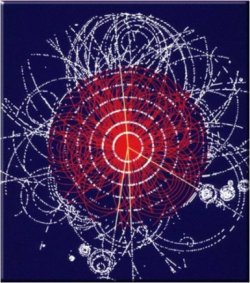
The group has exploited its expertise in e-science to develop key elements of the core ATLAS software. The ATLAS metadata interface (AMI) enables all ATLAS data from various sources to be readily accessed via a web interface. The group maintains a large Tier2 computing facility which process ATLAS data and generates simulated ATLAS events.
The group has significant expertise in the simulation of LHC physics events and is responsible for parts of the ATLAS software that are used to generate simulated events. Accurate simulation is essential for the physics programme of the experiments and the group has had several leadership roles in this area. The group also contributes to the identification of jets originating from b or c quarks, which is essential for the selection of events containing Higgs bosons and top quarks.
Construction, commissioning and operation of the SCT
Construction, commissioning and operation of the SCT
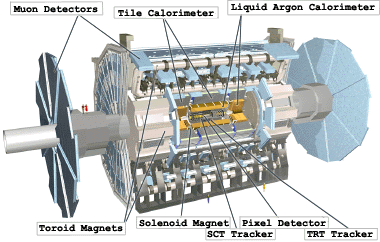 The group’s heritage in building detector systems (ALEPH and CDF vertex detectors, ALEPH ECAL) and in detector development has allowed us to play leading roles in the construction of the EC-SCT. Members led the work in key areas of the development of EC-SCT: radiation hardness of the Si detectors, low mass service and worked on the development of the readout hybrid and systems tests at CERN. During construction the group built and operated one of the two UK module production lines, achieving a throughput of 10 modules per week and constructing 274 modules. This required development of expertise in wire-bonding and building up an ATLAS readout system.
The group’s heritage in building detector systems (ALEPH and CDF vertex detectors, ALEPH ECAL) and in detector development has allowed us to play leading roles in the construction of the EC-SCT. Members led the work in key areas of the development of EC-SCT: radiation hardness of the Si detectors, low mass service and worked on the development of the readout hybrid and systems tests at CERN. During construction the group built and operated one of the two UK module production lines, achieving a throughput of 10 modules per week and constructing 274 modules. This required development of expertise in wire-bonding and building up an ATLAS readout system.
Members of the group were responsible for the co-ordinating the assembly of the SCT-EC in the UK and development of the Inner Detector (ID) cooling system.
Trigger Studies
Trigger Studies
The trigger system of ATLAS is responsible for selecting which of the approximately 40 million collisions per second are recorded to disk to be used in physics analyses. The hardware trigger reduces the collision rate to around 100 kHz and the software trigger reduces the rate to around 2kHz. The group plays an important role in the development and maintenance of the muon algorithms used in the software trigger. This includes measurements of the efficiency of the algorithms using events containing Z bosons. The group also coordinated the trigger menu preparations before the 13.6 TeV collisions and is leading the ATLAS-wide effort to prepare the muon algorithms for the high-luminosity LHC.
Upgrade of the ATLAS tracking system
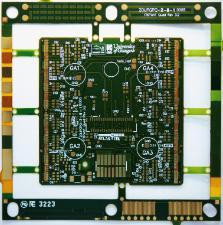
The High-Luminosity LHC is a significant upgrade of the LHC due to be completed around 2029 that will deliver upto 10 times as many collisions per second as the current LHC. To cope with the high collision rates, the inner tracking system of ATLAS will be replaced with an entirely new silicon tracking detector. The Glasgow group played a leading role in the design of the tracker and is responsible for the production of around 800 pixel modules and 1000 strip modules in the Glasgow Advanced Detector Development (GLADD) laboratories. The group has held several important leadership roles in the project, including overall leadership of the worldwide Pixel project. The group will subsequently play an important role in the installation and commissioning of the new detector at CERN.

